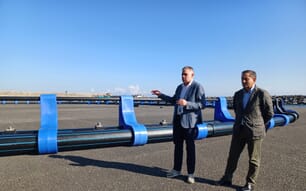The DNA identification analysis was performed by the Catholic University of Leuven, after over 280 samples were gathered in more than 150 restaurants and EU institutions. Seafood fraud, widespread mislabeling and fraudulent practices cheats consumers and can often involve illegal or unsustainable fishing products.
“DNA tests shows widespread seafood fraud in Brussels restaurants and even in official EU venues. Consumers are cheated and the door is left wide open to the laundering of illegal fishing products,” explains Lasse Gustavsson, Executive Director of Oceana in Europe.
“The EU needs to clean up its fishy business, take responsibility and urgently improve traceability and labelling of seafood.”
Too cheap to be true
Key findings of Oceana’s study reveals that economic reasons are the main driver behind the seafood fraud, resulting in consumer deception. Expensive species, such as cod or sole, sold for as much as 30 or 40 euros per dish, can be substituted by cheap, farmed Pangasius.
The top 3 fraudulent species found are:
- In 95 per cent of cases; costly bluefin tuna was sold as bigeye tuna or yellowfin tuna – both cheaper tropical tuna species.
- In 11 per cent of cases; common sole was substituted for another cheaper flatfish species.
- In 13 per cent of cases; cod was substituted for one of seven different species; most often being Pangasius or saithe.
In addition, Oceana has discovered that 38 per cent of fish served in EU institution canteens to decision-makers (EU Parliament, EU Commission) is a different than what was ordered.
“The first step for EU decision-makers is to realise that this is a EU-wide problem and they, as consumers themselves, are just as vulnerable as the rest of us. As EU fish resources become scarcer due to overexploitation, the market demand is becoming satisfied with imported products or cheaper substitutes, deceiving consumers,” added Gustavsson.
Technical data
- Samples collected by Oceana researchers in touristic and EU districts of Brussels between March and June 2015.
- 280 samples compiled (217 from restaurants, 42 from EU canteens and 21 from sushi bars).
- DNA extraction and identification was done by Biogenomics (Catholic University of Leuven) through DNA mitochondrial marker, known as the “COI barcoding method”.
- The marker was then checked against the BOLD database, which has more than 11,000 fish species recorded
- 197 samples were identified to the species level, 80 samples to the genus level and 3 samples did not match any record in the database.
- Overall, 36 different species detected through testing.
This work was made possible by a generous grant from Oceans 5 and the Paul M. Angell Family Foundation




